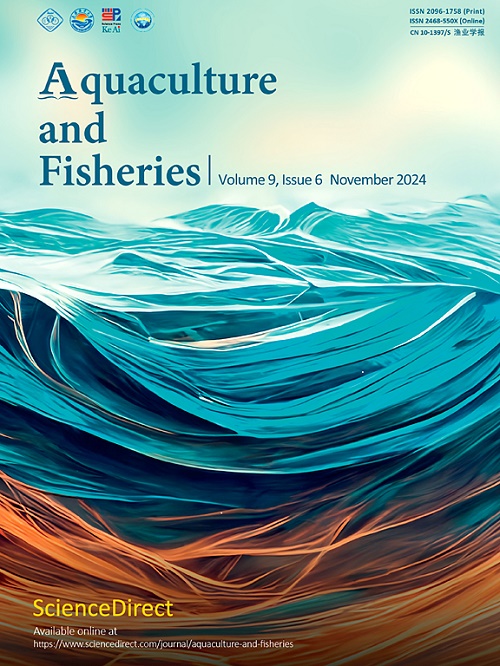Environmental life cycle assessment and potential improvement measures in the shrimp and prawn aquaculture sector: A literature review
Q1 Agricultural and Biological Sciences
引用次数: 0
Abstract
The shrimp and prawn aquaculture sector is a growing component of the global food supply. However, this ongoing growth can lead to environmental implications. Life Cycle Assessment (LCA) enables the assessment of these consequences by providing environmental information about the entire value chain. Furthermore, LCA highlights the improvements in environmental performance. This study aims to analyze the literature on LCA of shrimp production at different locations to assess methodological approaches such as functional unit and system boundaries, inventory data collection, impact categories evaluated, and main findings. A literature review in Scopus databases is performed to achieve this aim. Among the reviewed studies, it is observed that the scope of most of them encompasses everything from hatchery to farm gate. Some cases include packaging and transport to the point of destination. The consumption and waste treatment stages have been included in only two cases. The most analyzed impact categories are climate change, eutrophication, and acidification. The critical spots identified are feed formulation and farm energy use. The shrimp aquaculture sector could enhance its environmental performance by incorporating raw materials that replace the consumption of fishmeal and soybean meal in feeds with more sustainable alternatives. The adequate adjustment of the feed conversion ratio could support mitigating the amount of sediment and unconsumed feed, thereby reducing nutrient concentration in discharges. Renewable energy sources could be employed to cover the on-farm demands.
对虾和对虾水产养殖业的环境生命周期评估和潜在改进措施:文献综述
对虾水产养殖部门是全球粮食供应中一个日益增长的组成部分。然而,这种持续的增长可能会导致环境影响。生命周期评估(LCA)通过提供有关整个价值链的环境信息,能够对这些后果进行评估。此外,LCA强调环境绩效的改善。本研究旨在分析不同地点对虾生产的LCA文献,以评估功能单元和系统边界、库存数据收集、评估的影响类别和主要发现等方法学方法。在Scopus数据库中进行文献综述以实现这一目标。在审查的研究中,可以观察到大多数研究的范围涵盖了从孵化场到农场大门的所有内容。有些情况包括包装和运输到目的地。消费和废物处理阶段只包括在两个案例中。分析最多的影响类别是气候变化、富营养化和酸化。确定的关键点是饲料配方和农场能源使用。对虾养殖部门可以通过在饲料中加入可替代鱼粉和豆粕消费的原料,从而提高其环境绩效。适当调整饲料系数可以减少泥沙和未消耗饲料的数量,从而降低排放物中的养分浓度。可再生能源可以用来满足农场的需求。
本文章由计算机程序翻译,如有差异,请以英文原文为准。
求助全文
约1分钟内获得全文
求助全文
来源期刊

Aquaculture and Fisheries
Agricultural and Biological Sciences-Aquatic Science
CiteScore
7.50
自引率
0.00%
发文量
54
审稿时长
48 days
期刊介绍:
 求助内容:
求助内容: 应助结果提醒方式:
应助结果提醒方式:


